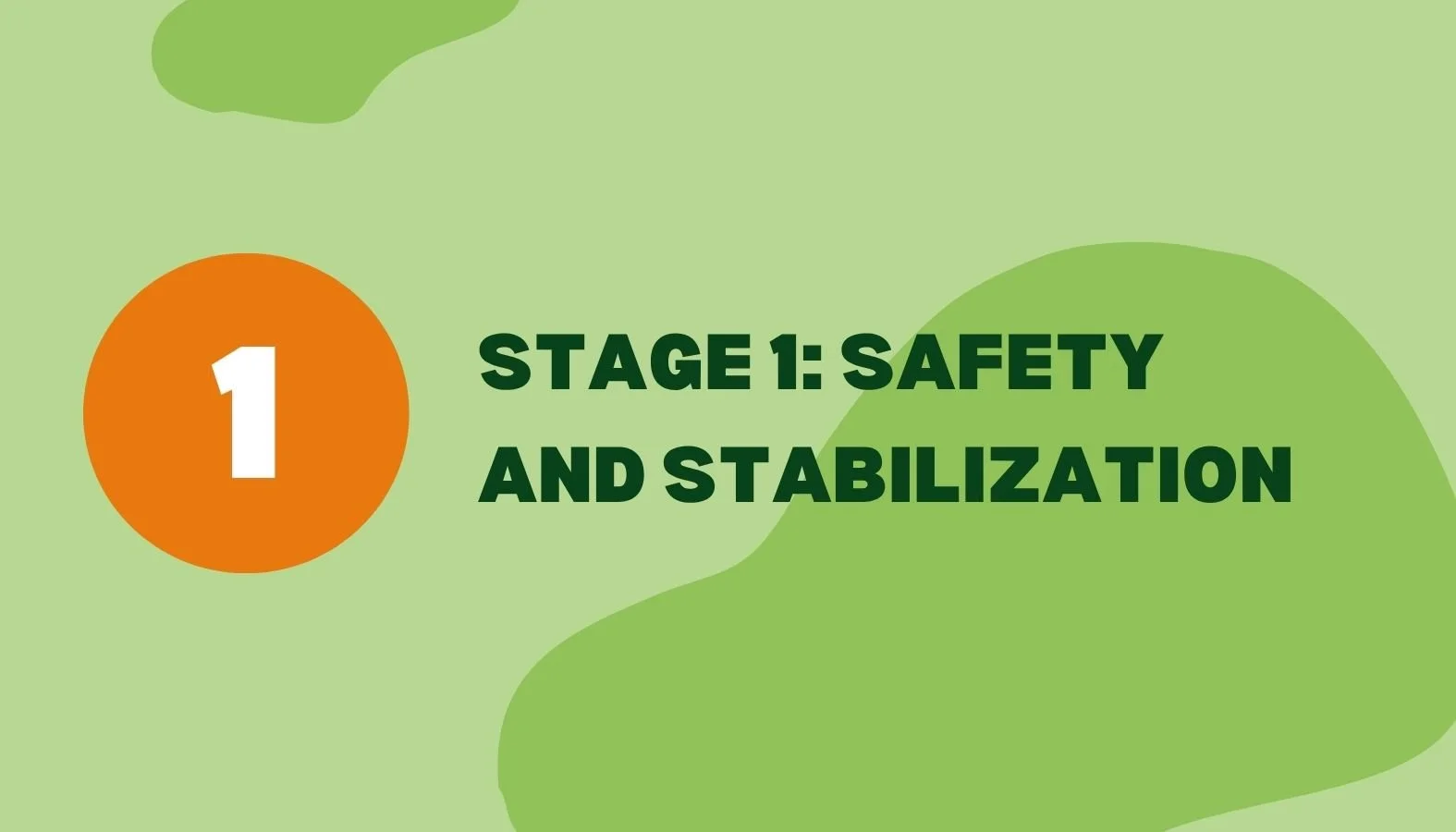Dr. Judith Herman’s Three Stages of Trauma Treatment in Practice—How This Has Looked for My Clients
Trauma-focused therapy can feel mysterious or even intimidating at first. Dr. Judith Herman’s three stages of trauma treatment offer a roadmap for healing (Herman, 1998). The stages are: safety and stabilization, remembrance and mourning, and reconnection and integration. These stages help therapists and clients understand where they are in the recovery process and what’s needed next (Rothschild, 2021).
In my work as a CBT therapist (and alongside colleagues who practice EMDR, like Brittany), I often draw on this framework. My goal in this post is to show you what these stages look like in real therapy sessions, so you can feel more confident going into therapy.
“Safety and stabilization” is the first stage in any successful trauma treatment, and it involves learning to regulate emotions, understanding the effects of trauma on your body and brain, and reducing chaos and crisis. This strong foundation of coping skills, increasing social supports and resources, and understanding how your brain and body work will allow you to more confidently approach discussing the trauma in Stage 2.
Some tools you might expect to learn from me during Stage 1 are Dialectical Behavior Therapy (“DBT”) skills (Linehan, 2025). You might benefit from DBT emotion regulation, distress tolerance, or interpersonal effectiveness skills, which would help you navigate difficult emotions and strengthen relationships. I also use grounding and mindfulness to help you stay in the here-and-now and gain more control over your symptoms.
Example of Stage 1 work:
One day, early in our work together, “John” asked, “Do you want me to tell you what happened in detail?” I assured him that I was not afraid of hearing the details of what happened to him, but we would first focus on coping skills and understanding his trauma responses before revisiting the memories.
We started with distinguishing between safe and unsafe situations. He learned to recognize when his body’s alarm system (what clinicians call interoceptive cues) was signaling danger even when the environment seemed safe. John learned to use his emotions as one piece of information, while staying present enough to look at other information as well. Learning coping skills and increasing his awareness of trauma-related symptoms built the stability for the next stage of our work together.
I move on to Stage 2 when you are able to manage your day-to-day symptoms, your quality of life has improved, and you can, like John, implement coping skills and notice trauma-related symptoms. Stage 2 involves coming to terms with traumatic memories. The goal is for the memory to no longer be triggering, for your nervous system to recover easily from stress, and for you to feel more engaged in daily life. This stage can include exploring how the trauma impacted your beliefs, safely discussing details of the event, and reducing avoidance. Avoidance means intentionally steering clear of anything that reminds you of the trauma. This can sometimes cause your life to become very small and stop you from engaging in meaningful activities.
Example of Stage 2 work:
For “Mariah,” Stage 2 meant exploring how her trauma shaped her beliefs about herself and others. She began gradually confronting situations she had avoided, like driving past places linked to her abuse. Afterwards, she shared that she felt proud and empowered. Through this work, she began to see that the abuse was not her fault, offered compassion to her younger self, and felt prepared to pursue healthy relationships again.
Stage 3 involves making meaning of the trauma and integrating it into your sense of self and your life. This often means strengthening relationships, acting on your values, and pursuing paths that may have once felt out of reach.
Examples of Stage 3 work:
For “Caroline,” Stage 3 looked like accepting both her love and disappointment toward her mother and setting clear boundaries. Caroline was also open with her girlfriend about the impact of Caroline’s abuse on their intimacy, and she worked to find joy and connection with her partner.
“Gladys” wanted to reassert her independence and live life in line with her values. Her values included helping others and connecting with her faith. Before our work together, she was not engaging with these values because she was afraid of getting close to other people. As part of Stage 3, she began making and giving away rosaries, which gave her a sense of purpose.
Summary
Trauma treatment is not linear and moving forward and backward in these stages throughout the course of treatment is normal and expected. My goal for trauma treatment is always to cultivate safety, stability, connection, and joy with you. This may mean slowing you down in some moments or pushing you to try something new and out of your comfort zone in others. If you’re curious about how trauma-focused therapy might help you, feel free to schedule an appointment with me.
If you’re curious about how trauma-focused therapy might help you, reach out to Dr. Alexandra Halberstadt!
References
Herman, J. L. (1998). Recovery from psychological trauma. Psychiatry and Clinical Neurosciences, 52(S1), S98-S103.
Linehan, M. M. (2025). DBT skills training manual revised edition. Guilford Publications.
Rothschild, B. (2021). Revolutionizing trauma treatment: Stabilization, safety, & nervous system balance. WW Norton & Company.





